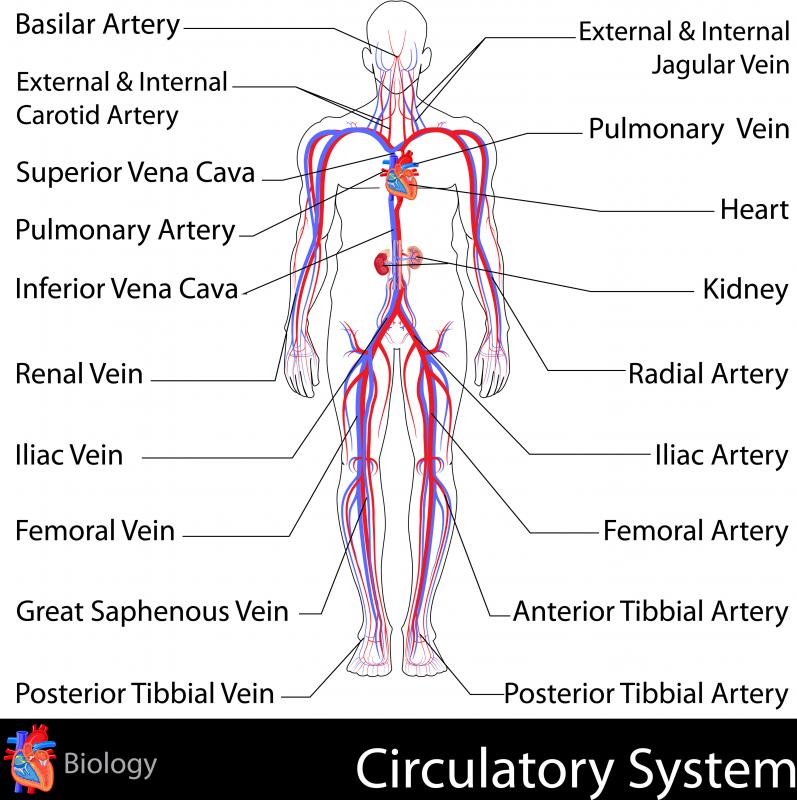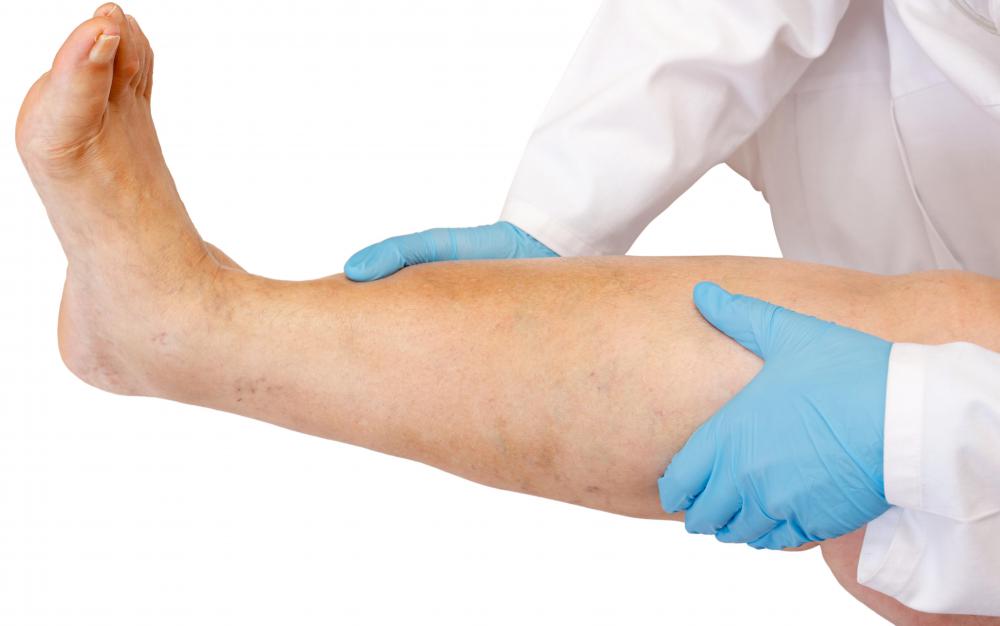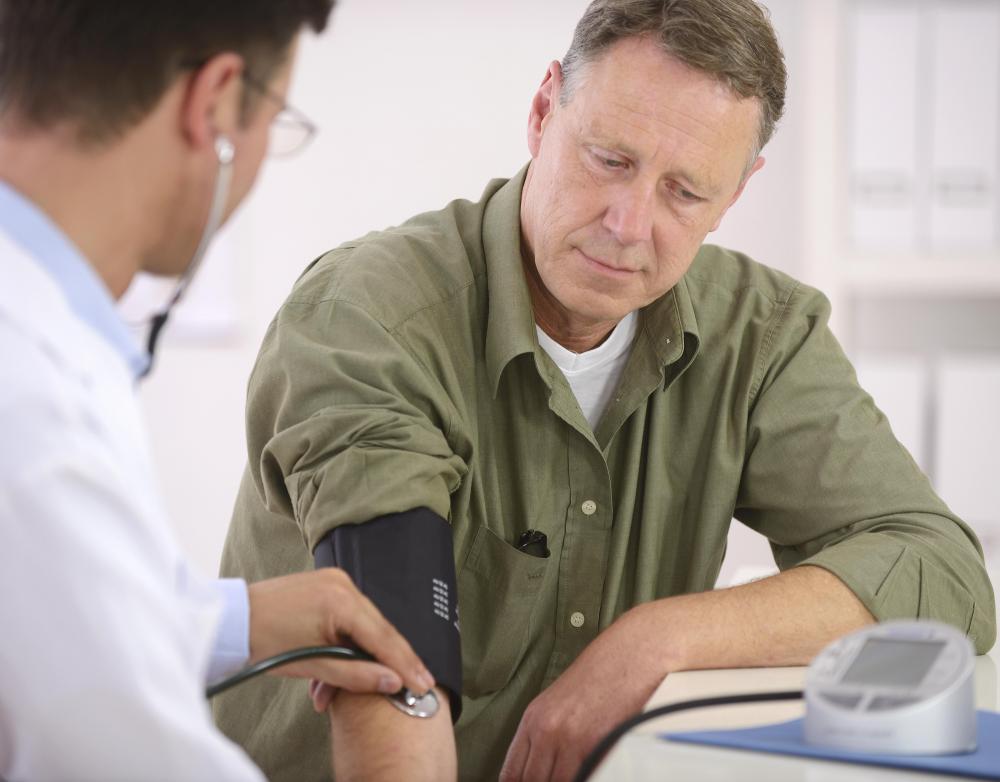At WiseGEEK, we're committed to delivering accurate, trustworthy information. Our expert-authored content is rigorously fact-checked and sourced from credible authorities. Discover how we uphold the highest standards in providing you with reliable knowledge.
What Are the Different Tissues in the Circulatory System?
The circulatory system transports essential materials in the body and helps regulate certain functions. Its primary components include the heart, blood vessels, and blood itself. Both the blood vessels and the heart contain three tissue layers, with the heart’s layers creating the endocardium, the myocardium, and the epicardium. Blood vessels consist of the following tissuess: smooth muscle, connective, and epithelial. If the lymphatic system is considered part of the circulatory system, then lymphatic tissues also fall into the tissues in the circulatory system category.
All tissues, including those in the circulatory system, consist of cell groups that collectively perform specific functions. Main tissue varieties include connective tissue, muscle tissue, and epithelial tissue. The latter type generally makes up the linings or organs. In turn, connective tissue, consisting of collagen and other substances, strengthens, supports, and helps keep organs together. Muscle tissues, on the other hand, contain proteins that help organs constrict and move.

Two types of blood vessels, veins and arteries, carry blood to and from the heart, respectively. These tubes are of varying lengths and widths, but each is built from the same three layers of tissues in the circulatory system. A layer of smooth muscle tissue helps the vessels contract and move blood. This layer is surrounded by more elastic connective tissue that allows the vessels to expand and handle higher blood pressure. The innermost layer, endothelial tissue, is a form of eipithelial tissue that provides a barrier between the blood and other vessel layers, helps in processes like blood clotting, and facilitates the rate of blood flow.

Endothelial cells create the innermost tissues in the circulatory system's main fixture — the heart — as well. This endocardium layer serves as both a heart-blood barrier and as a guide for underlying myocardial tissue. The myocardium is arguably the heart of the heart, so to speak, as it actually dictates the muscular contractions that cause the heart to pump. It is composed of parallel and durable muscle fibers known as cardiac muscle cells. The outermost tissue layer of the epicardium provides protection for the heart, and it consists of connective tissue.

Another circulatory system that works with the blood circulatory system is the lymphatic system. This network of lymph and lymph vessels helps collect and remove fluids from the body and helps produce disease-fighting agents. Lymphatic tissues in the circulatory system have cells known as lymphocytes that perform these functions. The tissue may be loose, dense, or nodular in structure. The latter type makes up lymph nodes.
AS FEATURED ON:
AS FEATURED ON:

















Discussion Comments
It seems that the whole circulatory system works off of muscle. True, there are other things involved, but without the function of the muscle tissue, they really couldn't do anything.
Blood couldn't get where it needs to go, because the veins and arteries couldn't move it along. The heart itself is one big muscle, and if it stopped, then you'd be dead.
People place a lot of importance on the muscles that you can see. However, the most important ones are the ones on the inside.
I never thought of the lymphatic system as part of the circulatory system. I would consider them more of the immune system.
However, the lymph does circulate throughout the body. When you have an infection, it will travel to where it is needed most, so it really is circulatory fluid.
@DylanB – This just makes me wonder how much arteries can take. I know that having high blood pressure for years really stresses your body out, even to the point of death.
How would going through phases of high blood pressure followed by phases of normal pressure affect the muscles around the arteries? Let's say that a person had high blood pressure for five years but then lowered it by medication for five years. After that, he got high blood pressure again for a few years.
Would this mess with his arteries to the point that they would lose the ability to contract and expand? Can arteries take years of variable blood pressure like this?
It's a good thing that the arteries are surrounded by muscle. They carry the blood that is leaving the heart, so they are really affected by high blood pressure.
The heart is like a person blowing air into a balloon. The pressure is determined by how hard the person blows. The balloon is like an artery, getting bigger to allow for more air.
Post your comments